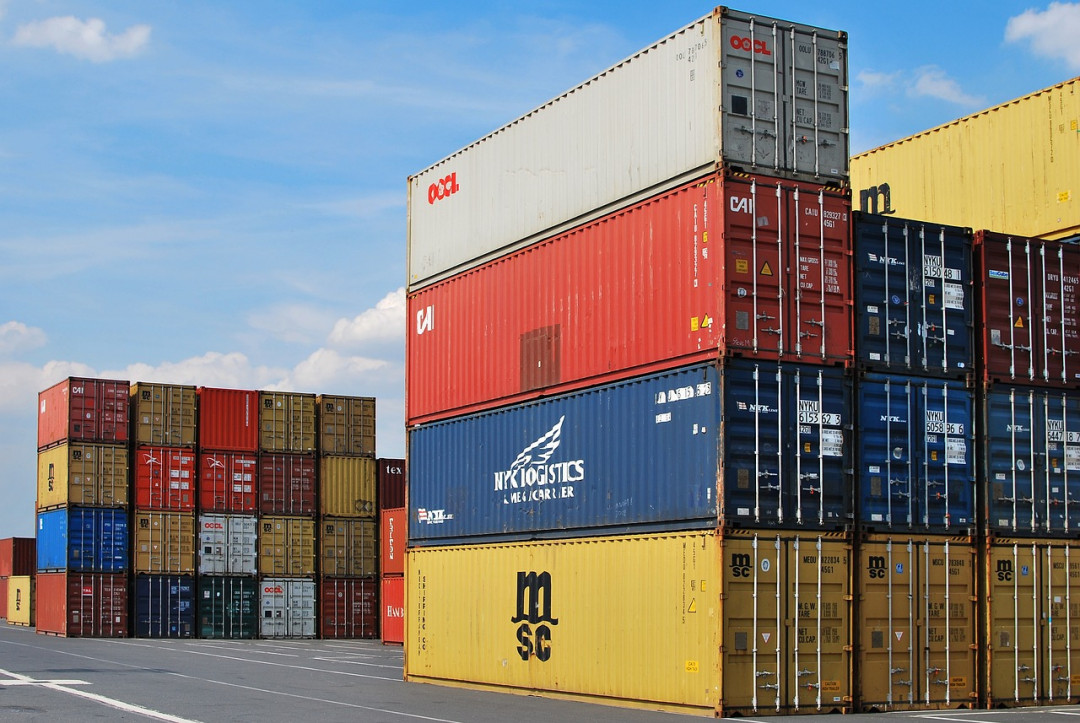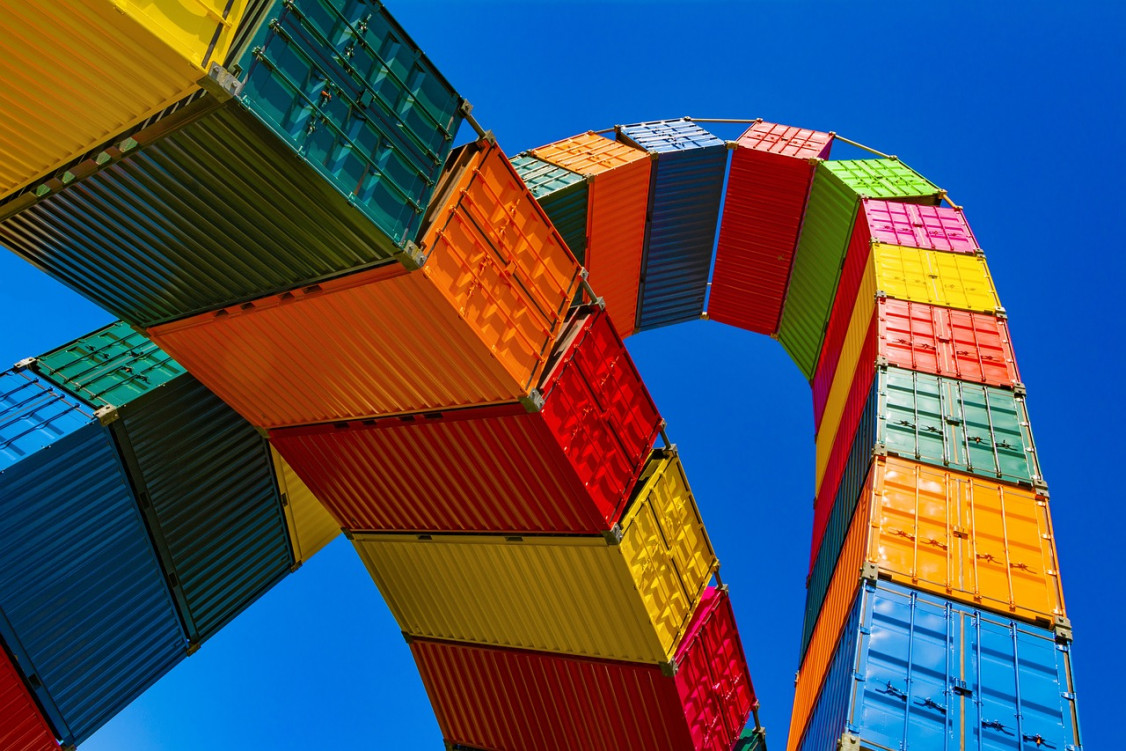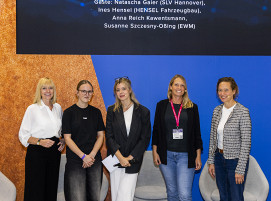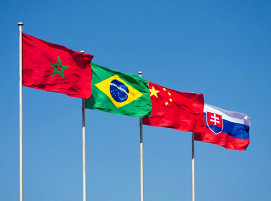
China and Germany: The Trade Tide is Turning
While the two countries have historically enjoyed a strong complementary partnership, intensifying industrial competition is threatening German manufacturing in sectors where it once held dominance. Trade structures between Germany and China are changing, with exports as a share of GDP to China decreasing by nearly a third since its peak in Q4 2020. The German trade balance with China has been tilted for a long time but the German trade deficit has intensified over the last two years (Figure 6). Moreover, we find that Germany’s critical dependency on China has increased from 6 % of imports in 2004 to 22 % in 2022. This covers 212 product types, of which 74 are in the computers & telecom, electronics and household equipment sectors, while 44 products are in textiles and 33 in chemicals. The sectoral breakdown has shifted towards higher value-added industries over the years.
China is moving up global value chains, with global export market shares surpassing Germany in key sectors. China’s strategy of importing knowledge through cooperation and investing in highly innovative manufacturing businesses abroad has proven successful. It has steadily moved up the value chain and captured market share in advanced industrial sectors while simultaneously squeezing out European products from its domestic market. The impact is evident in shifting trade patterns. China’s global export market share has continued to increase from less than 4 % in 2000 to 14 % in 2022. Meanwhile, German global export market shares have stagnated around 10 % for a long time and settled at 8 % in 2022. More importantly, China’s global export share has surpassed that of Germany in three out of four main export sectors: machinery & equipment, chemicals and computers & telecom, electronics and household equipment. Highly specialized German machinery companies, manufacturers of combustion engine vehicles and producers of specialized chemicals are facing intense competition from Chinese rivals that are backed by price competitiveness and policy support from Beijing. Germany retains a lead in auto manufacturers and suppliers and transport equipment, but this has narrowed slightly in recent years. Indeed, while German exports of passenger cars to China rose by 38 % over the last decade, they have declined sharply by 10 % in the last two years. It is also interesting to differentiate between exports related to global value chains and those that go directly to the final market. China seems to be gaining ground much faster in traditional exports, probably reflecting two trends. On the one hand, at the earlier stages of industrialization, exports of goods that require less value-added and less sophisticated supply chains take off faster. On the other hand, more recently, China has been able to integrate long sequences of value chains domestically, thus providing goods that require less participation of other countries. This latter point is further supported by evidence in trade of intermediate products between Germany and China, which has slowed drastically in 2022 and 2023.

The window of opportunity is narrowing for German manufacturing as the economic relationship between Germany and China shifts from complementarity to substitution – even within the EU. German machinery exports to BRIS (excluding China) and ASEAN countries have decreased by 23 % and 14 %, respectively, compared to 2019, while Chinese machinery exports to these regions have seen significant growth of 89 % and 31 %. In Europe, which accounts for two-thirds of German exports, China has also gained market share at Germany’s expense. While Germany has historically been a major source of imports in the EU market, particularly in advanced manufacturing sectors like motor vehicles and machinery, its market share has been declining. In the last five and 10 years, 10 out of 11 advanced manufacturing sectors have experienced a decrease in market share, with basic metals (+0.3pp between 2018 to 2023) and pharmaceutical products (+0.6pp between 2013 to 2023) being the only exceptions. Transport equipment, excluding motor vehicles, has faced the most significant downturn, with declines of -5.3pps and -8.4pps. In contrast, China has been making significant gains in the EU market across all sectors. Only computer, electronic and optical products have recorded a slight downtick (-0.4%). The momentum is especially strong in electrical equipment, which has risen by 5.1pps from 2018 to 2023 and 7.0pps from 2013 to 2023. This trend highlights the growing competitiveness of China and the challenges it poses to Germany's traditional strengths in the market.
Shrinking revenues and market share put pressure on profits of German firms operating in China. While some German companies have soured on the Chinese market, it remains an attractive destination for investments by large corporations. Between 2010 and 2022, German direct investments to China have increased fivefold, particularly in motor vehicles, and quadrupled in chemicals. But German investments have underperformed globally compared to their competitors. As a result, German firms have experienced a lower turnover in China of -EUR 6.2bn and less returns on their direct investments of -EUR24.8bn in 2022 compared to a counterfactual scenario without knowledge and technology transfers. To stay competitive, companies are reinvesting their profits made in China back into the country, reducing funds to be sent to Germany. Further economic challenges at home linked to high energy prices and rising bureaucracy are adding pressure on internationally active firms. This has resulted in job cuts domestically, prompting calls for EU-driven protectionist and de-risking measures.
(Source: Allianz Press Release)





![SCHWEISSEN & SCHNEIDEN 2025 [EN]](/images/frontend/journals/dvs-sus_sm.png)

